Contents
All You Need to Know About Beadboard Bathroom Design and Installation
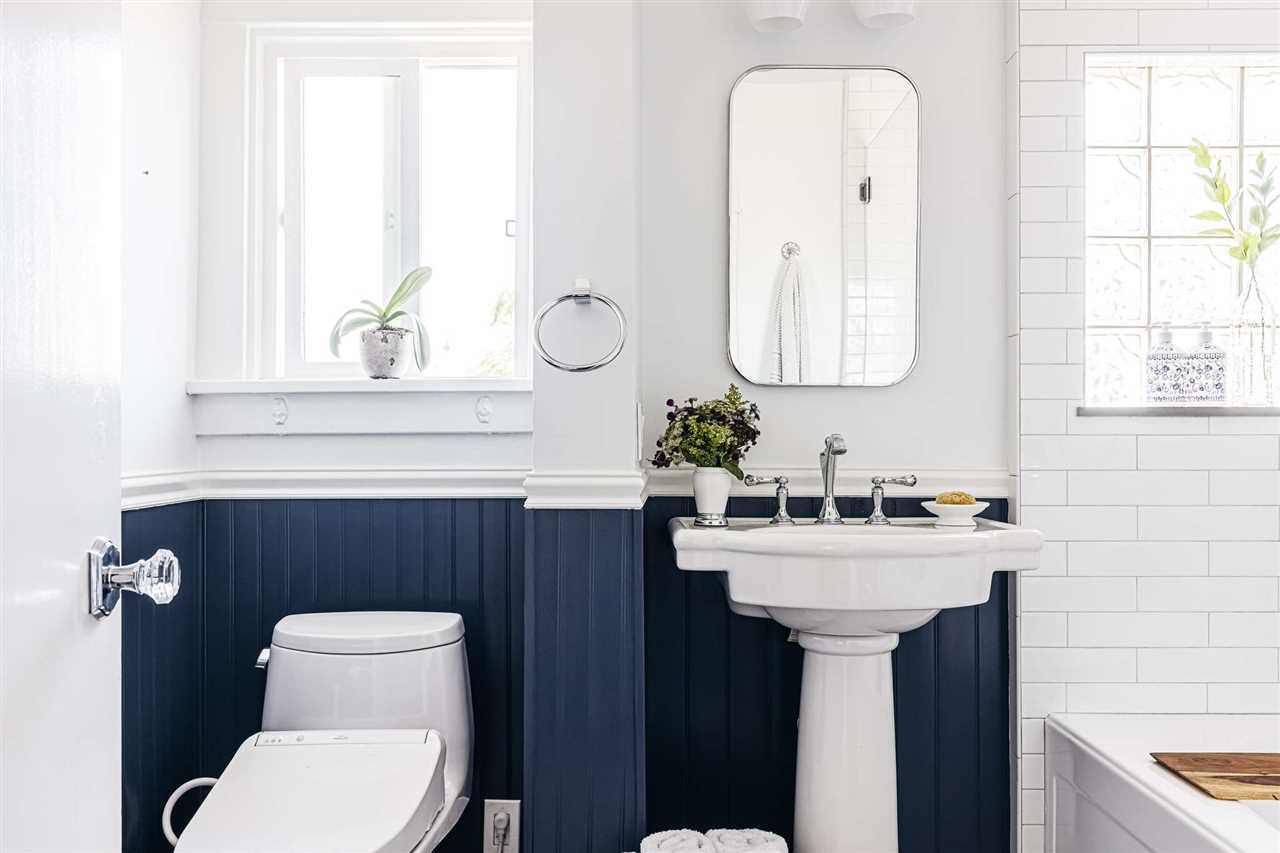
When it comes to bathroom renovations, one design element that can make a big impact is beadboard. Beadboard is a type of paneling that features narrow vertical planks with a distinctive groove or bead running along the length. It adds a touch of classic charm and character to any bathroom.
One of the main advantages of beadboard is its versatility. It can be used on walls, ceilings, or even as wainscoting. It can be painted in any color to match your bathroom decor or left unpainted for a natural wood look. The vertical lines of the beadboard can also help visually expand the space, making it appear larger and more open.
In terms of installation, beadboard is relatively easy to work with. It can be installed directly over existing drywall or plaster, or it can be applied to a wooden frame for added stability. The panels can be cut to size and easily attached with nails or adhesive. Beadboard can also be combined with other materials, such as tile or wallpaper, to create a unique and personalized look.
When designing a beadboard bathroom, there are several key elements to consider. Lighting is important to ensure the space is well-lit and functional. A combination of overhead lighting, wall sconces, and a vanity mirror with built-in lights can create a bright and inviting atmosphere.
The sink is another important feature to consider. A pedestal sink or a wall-mounted sink can add a touch of elegance and maximize space in a smaller bathroom. Alternatively, a vanity with beadboard doors or a countertop made from beadboard can provide additional storage and surface area.
Finally, don’t forget about storage. Beadboard can be used to create built-in shelves or cabinets that blend seamlessly with the rest of the design. This provides a practical solution for storing toiletries, towels, and other bathroom essentials.
In conclusion, beadboard is a versatile and timeless design element that can enhance any bathroom renovation. Whether you choose to use it on the walls, ceilings, or as wainscoting, it adds a touch of classic charm and character. With its easy installation and ability to be combined with other materials, beadboard offers endless possibilities for creating a unique and personalized bathroom design.
Benefits of Beadboard Bathroom Design
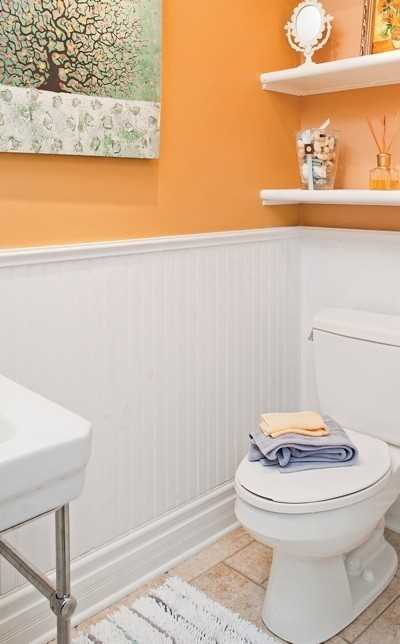
When it comes to bathroom design, beadboard is a popular choice among homeowners. This versatile material offers several benefits that can enhance the overall look and functionality of your bathroom. Whether you’re planning a renovation or simply want to update the style of your bathroom, beadboard is worth considering. Here are some of the benefits of using beadboard in your bathroom design:
- Enhanced Aesthetics: Beadboard can add a touch of elegance and charm to any bathroom. Its timeless design and classic look can instantly transform a dull and boring space into a stylish and inviting one. Whether you choose to install beadboard on the walls, ceiling, or both, it can create a visually appealing backdrop for your bathroom.
- Easy Maintenance: One of the biggest advantages of beadboard is its easy maintenance. Unlike other materials like tile, which require regular cleaning and grout maintenance, beadboard can be easily wiped clean with a damp cloth. This makes it a great option for bathrooms, where cleanliness is essential.
- Improved Durability: Beadboard is known for its durability. It is resistant to moisture, which is especially important in a bathroom. Unlike drywall or wallpaper, beadboard can withstand the humidity and moisture levels typically found in bathrooms without warping or deteriorating.
- Ample Storage Options: Beadboard can be used to create built-in storage solutions in your bathroom. You can install beadboard on the walls and add shelves or cabinets to maximize storage space. This is especially useful in small bathrooms where storage is often limited.
- Enhanced Lighting: Beadboard can help to enhance the lighting in your bathroom. Its reflective surface can bounce off natural or artificial light, making the space appear brighter and more spacious. This can be particularly beneficial in bathrooms with limited natural light.
- Cost-Effective Solution: Beadboard is an affordable option for bathroom design. Compared to other materials like tile or stone, beadboard is relatively inexpensive. This makes it a cost-effective choice for homeowners who want to update their bathroom on a budget.
- Versatile Design Options: Beadboard comes in a variety of styles, colors, and finishes, allowing you to customize your bathroom design according to your personal taste. Whether you prefer a traditional, rustic, or modern look, there is a beadboard option to suit your style.
In conclusion, beadboard is a versatile and practical choice for bathroom design. Its enhanced aesthetics, easy maintenance, durability, storage options, improved lighting, cost-effectiveness, and versatile design options make it a popular choice among homeowners. Consider using beadboard in your next bathroom renovation or update to enjoy these benefits and create a beautiful and functional space.
Enhances Bathroom Aesthetics

Introducing beadboard into your bathroom design can greatly enhance the overall aesthetics of the space. Whether you are planning a full bathroom renovation or just looking to add some character to your existing bathroom, beadboard is a versatile and stylish option.
One of the main benefits of beadboard is its ability to create a sense of depth and texture in the bathroom. The vertical lines created by the beadboard panels can visually elongate the space, making it appear larger and more open. This is especially useful in smaller bathrooms where space is limited.
In addition to its visual appeal, beadboard also adds a touch of elegance and sophistication to any bathroom design. Its classic, timeless look can complement a variety of styles, from traditional to contemporary. Whether you prefer a vintage-inspired bathroom or a modern, minimalist design, beadboard can be incorporated seamlessly.
Another advantage of using beadboard in the bathroom is its ability to enhance the lighting. The vertical lines of the beadboard panels can help reflect and diffuse light, creating a brighter and more inviting atmosphere. This is particularly beneficial if your bathroom lacks natural light or if you want to create a spa-like ambiance.
Beadboard can also be used to highlight other design elements in the bathroom. For example, it can be used as a backsplash behind the sink or as an accent wall behind the bathtub. This can add visual interest and create a focal point in the space.
Furthermore, beadboard can be a practical addition to your bathroom in terms of storage. You can install beadboard panels on the walls and use hooks or shelves to hang towels, robes, or other bathroom essentials. This not only adds functionality but also keeps your bathroom organized and clutter-free.
Lastly, beadboard can be a cost-effective alternative to tile. While tile can be expensive and labor-intensive to install, beadboard is relatively easy to install and more budget-friendly. It can give your bathroom a similar look and feel to tile without breaking the bank.
In conclusion, beadboard is a versatile and stylish option for enhancing the aesthetics of your bathroom. Whether you want to create a sense of depth, add elegance, enhance lighting, highlight other design elements, provide storage, or save on costs, beadboard can fulfill all these requirements. Consider incorporating beadboard into your bathroom design to create a beautiful and functional space.
Provides Durability and Water Resistance

Beadboard is a popular choice for bathroom design and renovation due to its durability and water resistance. Unlike other materials like tile or wallpaper, beadboard can withstand the moisture and humidity that is often present in bathrooms.
Beadboard is made from individual panels that are installed vertically on the walls of the bathroom. These panels are typically made from wood or PVC, both of which are known for their ability to resist water damage. This makes beadboard an ideal choice for bathrooms, where water and moisture are common.
One of the main advantages of beadboard is its ability to protect the walls from water damage. The panels create a barrier between the bathroom walls and the moisture that can accumulate in the room. This helps to prevent issues such as mold and mildew, which can be a common problem in bathrooms.
In addition to its water resistance, beadboard also provides durability. The panels are designed to withstand the wear and tear that can occur in a bathroom, such as splashes from the sink or shower. This means that beadboard can maintain its appearance and functionality for many years, making it a long-lasting choice for bathroom design.
Beadboard can also be a versatile addition to a bathroom design. It can be used to create a traditional, cottage-style look, or it can be paired with modern fixtures and lighting for a more contemporary design. The panels can be painted in any color to match the overall design scheme of the bathroom, and they can also be easily replaced or updated if desired.
In terms of installation, beadboard is relatively straightforward. The panels are typically installed using adhesive or nails, and they can be cut to fit around fixtures such as the sink or mirror. This makes it a suitable option for DIY projects or professional installations.
Beadboard also offers additional benefits beyond its durability and water resistance. It can provide insulation for the bathroom, helping to keep the room warmer in colder months. It can also be used to add storage to the bathroom, with hooks or shelves easily attached to the panels.
In conclusion, beadboard is a popular choice for bathroom design and installation due to its durability and water resistance. It can protect the walls from water damage, provide a long-lasting solution, and offer versatility in design. Whether used in a traditional or modern bathroom, beadboard is a practical and stylish option.
Offers Versatility in Design Options

Beadboard is a popular choice for bathroom renovations due to its versatility in design options. Whether you want to create a traditional, farmhouse, or modern look, beadboard can easily be incorporated into your bathroom design.
One of the most common uses of beadboard in the bathroom is as a wall covering. Installing beadboard on the lower half of the walls can add a touch of elegance and charm to the space. It can also help protect the walls from moisture and make them easier to clean.
In addition to being used on the walls, beadboard can also be used on the ceiling to create a visually interesting and unique design. This can be especially effective in bathrooms with high ceilings, as it can help to visually lower the height of the room.
Beadboard can also be used as a backsplash behind the sink or vanity. This can add texture and visual interest to the space, while also protecting the walls from water damage. It can be combined with other materials, such as tile or stone, to create a custom look.
Another way to incorporate beadboard into your bathroom design is by using it to frame a mirror. This can give the mirror a more finished and polished look, while also adding a touch of style to the space.
Beadboard can also be used to create storage solutions in the bathroom. Installing beadboard panels on the sides of a vanity or on the front of a bathtub can create a cohesive and stylish look, while also providing additional storage space.
Finally, beadboard can be used to create a focal point in the bathroom. By installing beadboard on one wall and adding decorative lighting fixtures, you can create a stunning and eye-catching feature that will make your bathroom stand out.
In conclusion, beadboard offers a wide range of design options for your bathroom renovation. Whether you want to create a traditional, farmhouse, or modern look, beadboard can be used on the walls, ceiling, backsplash, mirror frame, storage solutions, and as a focal point. Its versatility and timeless appeal make it a great choice for any bathroom design.
Considerations for Beadboard Bathroom Installation
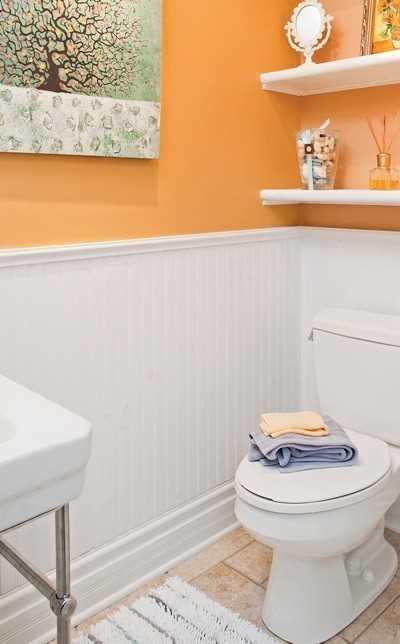
When considering a beadboard bathroom installation, there are several factors to keep in mind to ensure a successful renovation. From choosing the right materials to optimizing the design, these considerations will help you create a beautiful and functional space.
- Beadboard or Tile: One of the first decisions to make is whether to use beadboard or tile for your bathroom walls. Beadboard offers a classic and timeless look, while tile provides a more modern and versatile option. Consider your personal style and the overall design of your bathroom when making this decision.
- Proper Installation: Beadboard installation requires careful attention to detail to ensure a seamless and professional finish. It is important to properly measure and cut the beadboard panels, as well as secure them securely to the walls. Hiring a professional or seeking advice from an expert can help ensure a successful installation.
- Moisture Resistance: Bathrooms are prone to moisture and humidity, so it is crucial to choose beadboard that is moisture-resistant. Look for materials that are specifically designed for bathroom use and have a protective coating to prevent warping and damage.
- Consider the Sink: When installing beadboard in a bathroom, it is important to consider the placement of the sink. Be sure to measure the space accurately and plan accordingly to ensure that the beadboard does not interfere with the sink installation.
- Lighting and Storage: Beadboard can enhance the overall design of a bathroom, but it is important to consider how it will interact with lighting fixtures and storage options. Make sure to plan the placement of light fixtures and any built-in storage units to ensure that they complement the beadboard installation.
By considering these factors, you can ensure a successful beadboard bathroom installation. Whether you choose beadboard or tile, proper installation and attention to detail will result in a beautiful and functional bathroom design.
Choosing the Right Type of Beadboard
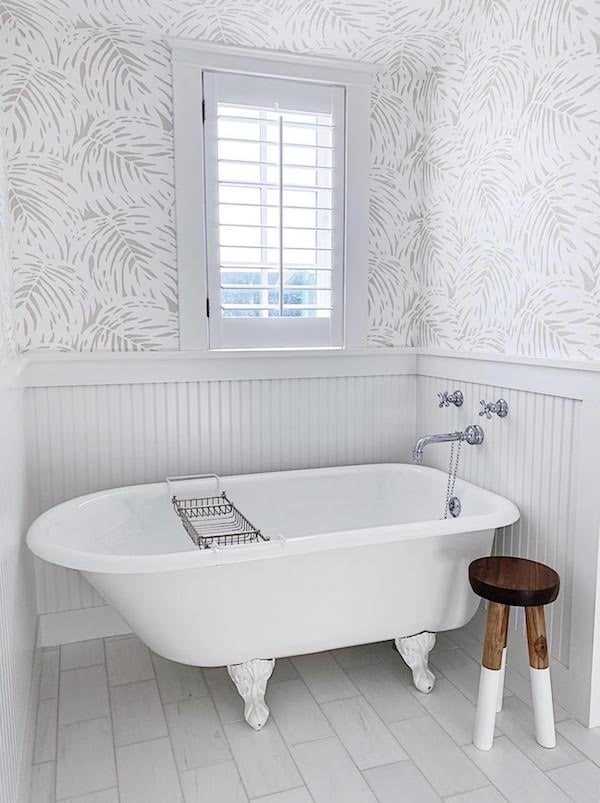
When it comes to choosing the right type of beadboard for your bathroom, there are a few factors to consider. The type of beadboard you choose will depend on the overall style and design you want to achieve, as well as the practicality and durability of the material.
1. Material: Beadboard is available in various materials, including wood, PVC, and MDF. Each material has its own advantages and disadvantages. Wood beadboard offers a natural and authentic look, but may require more maintenance. PVC beadboard is moisture-resistant and easy to clean, making it a popular choice for bathrooms. MDF beadboard is a cost-effective option that can be easily painted or stained.
2. Style: Consider the style of your bathroom when choosing beadboard. If you have a traditional or vintage-inspired bathroom, wood beadboard may be the best choice to enhance the classic look. For a modern or contemporary bathroom, PVC or MDF beadboard with a sleek finish can create a clean and minimalist aesthetic.
3. Installation: Consider the ease of installation when choosing beadboard. Some types of beadboard may require professional installation, while others can be easily installed as a DIY project. PVC beadboard often comes in interlocking panels that are easy to install, while wood beadboard may require more skill and precision.
4. Maintenance: Consider the level of maintenance required for the beadboard material. Wood beadboard may need regular sealing or staining to protect it from moisture and damage. PVC beadboard is low-maintenance and only requires occasional cleaning. MDF beadboard can be easily painted or stained to refresh its appearance.
5. Budget: Finally, consider your budget when choosing beadboard. Wood beadboard is typically more expensive than PVC or MDF beadboard. However, it offers a higher-end look and may be worth the investment if you want a luxurious bathroom design. PVC and MDF beadboard are more affordable options that still provide a stylish and durable finish.
In conclusion, choosing the right type of beadboard for your bathroom involves considering the material, style, installation process, maintenance requirements, and budget. By carefully weighing these factors, you can select the perfect beadboard that will enhance the overall design and functionality of your bathroom.
Preparing the Bathroom Walls for Installation
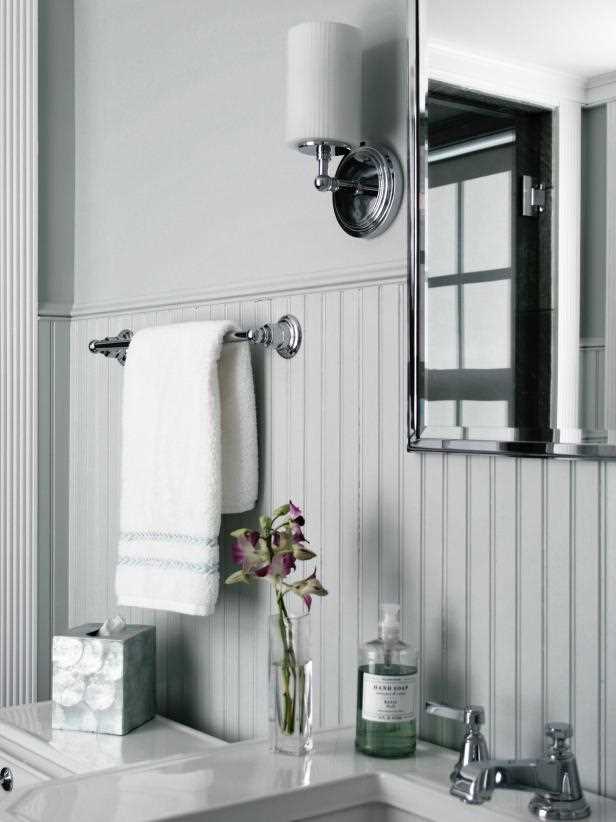
Before installing beadboard in your bathroom, it is important to properly prepare the walls to ensure a smooth and successful installation. Here are some steps to follow:
- Remove existing mirror and lighting fixtures: Start by removing any mirrors or lighting fixtures that are attached to the walls. This will give you a clear workspace and prevent any damage to these items during the installation process.
- Clear out the bathroom: Remove any furniture, accessories, or storage items from the bathroom. This will give you more space to work and prevent any potential damage to these items.
- Inspect the walls: Carefully inspect the bathroom walls for any signs of damage, such as cracks, holes, or water damage. Repair any issues before proceeding with the installation to ensure a solid foundation for the beadboard.
- Remove existing tile: If there is existing tile on the bathroom walls, you may need to remove it before installing the beadboard. Use a chisel or scraper to carefully remove the tile and adhesive, taking care not to damage the underlying wall surface.
- Clean the walls: Thoroughly clean the walls to remove any dirt, grease, or grime. Use a mild detergent and warm water, and scrub the walls gently with a sponge or soft cloth. Allow the walls to dry completely before proceeding.
- Measure and cut the beadboard: Measure the height and width of the bathroom walls and cut the beadboard panels to fit. It is important to leave a small gap at the top and bottom of each panel to allow for expansion and contraction.
- Apply adhesive: Apply a construction adhesive to the back of each beadboard panel, following the manufacturer’s instructions. Press the panels firmly against the walls, starting from the bottom and working your way up.
- Secure the beadboard: Use finishing nails or a pneumatic nail gun to secure the beadboard panels to the walls. Place the nails along the edges and in the center of each panel, ensuring a secure and stable installation.
- Finish the edges: Use trim or molding to finish the edges of the beadboard panels for a polished and seamless look. This will also help to protect the edges of the beadboard from damage.
By properly preparing the bathroom walls before installing beadboard, you can ensure a professional and long-lasting renovation. Take your time and follow these steps for a successful installation.
Installing Beadboard Panels Correctly
When it comes to beadboard bathroom design, the installation of the panels is a crucial step in achieving the desired look and functionality. Here are some key points to keep in mind when installing beadboard panels in your bathroom:
- Plan the layout: Before starting the installation, carefully plan the layout of the beadboard panels. Consider the placement of the sink, mirror, and other fixtures in the bathroom to determine the best configuration for the panels.
- Prepare the surface: Ensure that the bathroom walls are clean, dry, and free of any debris. If necessary, remove any existing tile or wallpaper before installing the beadboard panels.
- Measure and cut: Measure the height and width of the walls where the beadboard panels will be installed. Use these measurements to cut the panels to the appropriate size. It is recommended to leave a small gap at the bottom for expansion.
- Apply adhesive: Apply a strong adhesive to the back of the beadboard panels. Make sure to evenly distribute the adhesive to ensure a secure and long-lasting installation.
- Install the panels: Carefully place the beadboard panels onto the prepared surface, starting from one corner and working your way across. Use a level to ensure that the panels are straight and aligned properly.
- Secure the panels: Once the panels are in place, use finishing nails or paneling nails to secure them to the wall. Place the nails along the edges and in the center of each panel to ensure a secure attachment.
- Fill the gaps: After the panels are installed, fill any gaps or seams between the panels with caulk or wood filler. This will create a seamless appearance and prevent moisture from seeping behind the panels.
- Finish the edges: Finally, finish the edges of the beadboard panels with trim or molding for a polished look. This will also help to protect the edges from damage.
By following these steps, you can ensure that your beadboard bathroom design is installed correctly and will provide a beautiful and functional space for years to come. Additionally, consider incorporating proper lighting and storage solutions to enhance the overall design and functionality of your beadboard bathroom.
Maintenance and Care for Beadboard Bathrooms

Proper maintenance and care are essential to keep your beadboard bathroom looking its best. Here are some tips to help you maintain and care for your beadboard:
- Clean regularly: Regular cleaning is important to prevent dirt and grime from building up on the beadboard. Use a mild soap or cleaning solution and a soft cloth or sponge to wipe down the beadboard. Avoid using abrasive cleaners or scrub brushes, as they can damage the surface.
- Avoid excessive moisture: Beadboard is prone to water damage, so it’s important to keep the bathroom well-ventilated and dry. Use exhaust fans or open windows to help remove moisture from the air. Wipe up any spills or splashes immediately to prevent water from seeping into the beadboard.
- Inspect for damage: Regularly inspect the beadboard for any signs of damage, such as cracks, chips, or peeling paint. Repair any damage promptly to prevent further deterioration. If the damage is extensive, you may need to replace the affected sections of beadboard.
- Protect from heat: Beadboard can be sensitive to heat, so avoid placing hot objects directly on the surface. Use trivets or heat-resistant mats under hot hair styling tools or containers to protect the beadboard from heat damage.
- Consider lighting: Proper lighting in the bathroom can enhance the beauty of the beadboard and make the space more functional. Install adequate lighting fixtures, such as sconces or overhead lights, to ensure sufficient illumination in the bathroom.
- Maximize storage: Beadboard can be a great addition to bathroom storage solutions. Consider adding shelves or cabinets with beadboard accents to maximize storage space while maintaining a cohesive design.
- Use a mirror: A mirror can add depth and visual interest to a beadboard bathroom. Consider installing a mirror with a decorative frame or a mirror with integrated storage to enhance the functionality of the space.
- Plan for future renovation: If you’re planning a future renovation, keep in mind that beadboard can be painted or stained to achieve different looks. Consider the overall design of the bathroom and choose a color or finish that complements your desired aesthetic.
By following these maintenance and care tips, you can ensure that your beadboard bathroom remains beautiful and functional for years to come.
Cleaning and Removing Stains

Keeping your beadboard bathroom clean and free from stains is essential to maintain its beautiful design and overall appearance. Here are some tips on how to clean and remove stains from beadboard:
- Dust regularly: Use a soft cloth or feather duster to remove dust from the beadboard surface. Regular dusting will prevent the accumulation of dirt and keep the beadboard looking fresh.
- Gentle cleaning solution: Mix a mild soap or detergent with warm water to create a gentle cleaning solution. Dip a soft cloth or sponge into the solution and gently wipe the beadboard. Avoid using abrasive cleaners or scrub brushes, as they can damage the surface.
- Stain removal: For stubborn stains, you can try using a mixture of baking soda and water to create a paste. Apply the paste to the stained area and let it sit for a few minutes. Then, gently scrub the stain with a soft cloth or sponge. Rinse the area with clean water and dry it thoroughly.
- Avoid excessive moisture: Beadboard is generally moisture-resistant, but excessive moisture can still cause damage. Avoid using excessive water when cleaning the beadboard and make sure to dry it thoroughly after cleaning.
- Protect the beadboard: To prevent future stains and damage, consider applying a protective sealant or clear coat to the beadboard surface. This will create a barrier against stains and make cleaning easier.
By following these cleaning tips, you can keep your beadboard bathroom looking pristine and ensure its longevity. Regular maintenance and proper cleaning techniques will help preserve the beauty of your beadboard design.
Video:All You Need to Know About Beadboard Bathroom Design and Installation
EASY DIY Beadboard Wall
Hello, I am Beverly J. Sanders, the voice behind the diverse articles you come across on styves.co.za. My passion lies in exploring the nuances of home improvement and sharing tips that can help you transform your living space into a haven of comfort and style. From the latest trends in home decor to practical cleaning advice, I cover a broad spectrum of topics to cater to a wide variety of interests.
In my recent works, I have delved into the advantages of incorporating a horizontal Murphy bed into your home to save space without compromising on design and functionality. I also explored the benefits of having a free-standing electric fireplace that not only adds warmth to your home but also brings a sleek and modern design to any living space. My articles are a rich resource, offering insights into different products and home improvement strategies that can enhance the quality of your life.
I believe in the power of details; a belief that reflects in my comprehensive guides where I discuss even the overlooked aspects of home decor, such as the impact of baseboard trim in enhancing the overall look and feel of your home. I am constantly on the lookout for innovative solutions and products that can add value to your home and life.
Join me in my exploration as I continue to bring you the latest trends, tips, and insights in the home improvement world. Let’s create a home that is not just a place to live, but a reflection of style and personality.